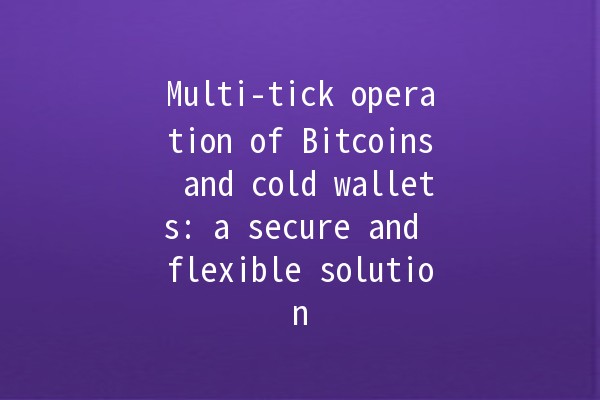




Multi-signature is a security mechanism that requires multiple signatures to complete a transaction. This mechanism is particularly suitable for use in scenarios where high security standards are required, such as corporate fund management and personal asset protection. In multi-signature, the wallet's private key is not exposed casually, but requires multiple authorizations to execute the transaction.
Bitpie is a highly secure digital wallet focused on providing a convenient user experience and superior security performance. It supports multiple cryptocurrencies and has a built-in multi-signature feature to ensure that users' assets are protected from hacking and access rights management issues.
Cold wallets are considered one of the safest forms of storage because they are not exposed to the internet. They are typically used for long-term storage of assets and have multiple signatures to further enhance security.

It is important to set a reasonable threshold for signatures when performing multi-signature operations. For example, you can set a threshold of 2 out of 3 signatures to authorize a transaction. This configuration can effectively prevent the loss of funds due to a single user losing their private key or account being stolen.
The use of multiple signatures in combination with hardware wallets and bitcoin wallets can greatly enhance the security of assets. Combining the private keys in hardware wallets with the multi-signature mechanism of bitcoin wallets requires the signatures of multiple hardware wallets to execute transactions, so that even if one wallet is hacked, the entire asset remains secure.
Ensuring that all multi-signature operations are recorded in detail can help you to trace back in case of problems. Use the note function to record the purpose, authorization and time of each transaction for future management.
Over time, you may have new members joining the team or old members leaving. In this case, it is a good practice to regularly review and update multiple signatories to ensure that you can quickly authorize and manage assets.
Using multi-tick functionality allows for effective management and allocation of assets, especially when working in teams. For example, you can configure multi-ticks for corporate accounts, ensuring that all important financial decisions are discussed and approved by the team collectively, thereby reducing the risk of a single error.
The main advantages of multi-signature operations include enhanced security, flexible asset management, reduced reliance on a single trust, and greater authority control. For example, in a corporate environment, multiple executives can sign transfers to ensure transparency and compliance in the use of funds.
The choice of the appropriate multi-tick threshold usually depends on your need for security and flexibility. If it is a personal account, less authorization may be required; while in a corporate environment, it is usually higher thresholds that must be signed by the management to be spent.
Although both support multi-tab functionality, their setup may differ slightly. Bitpie wallets are generally set up at the software level, while cold wallets may involve the connection and management of physical devices. Understanding the specific steps of each setup can effectively improve the security and convenience of the operation.
Yes, multi-signature operations add some complexity compared to single-signature methods. But with good management and standardization processes, this complexity can be translated into security. Users should use existing management tools to simplify the multi-signature process.
When setting up the multi-signature feature, consider including backup signatories. This way, even if the main signatory loses access, transactions can still be made through other signatories. In addition, periodic reviews are conducted to ensure the validity of all signatories.
While multi-signature offers an excellent solution for security, it may be too complex for some individual users with only a small amount of funds. It is suitable for situations where there are higher requirements for the security of funds or where it needs to be managed by multiple people.
By exploring the multi-signature operations of Bitcoin wallets and cold wallets, we can see the security and convenience of multi-signature technology for digital asset management. Both enterprises and individual users should consider using multi-signature measures to strengthen the protection of assets, making the use of digital currencies more efficient and secure. Whether through the reasonable setting of signature thresholds or in combination with hardware wallets, the flexible application of multi-signature technology will provide a more powerful guarantee for the security of users' assets.